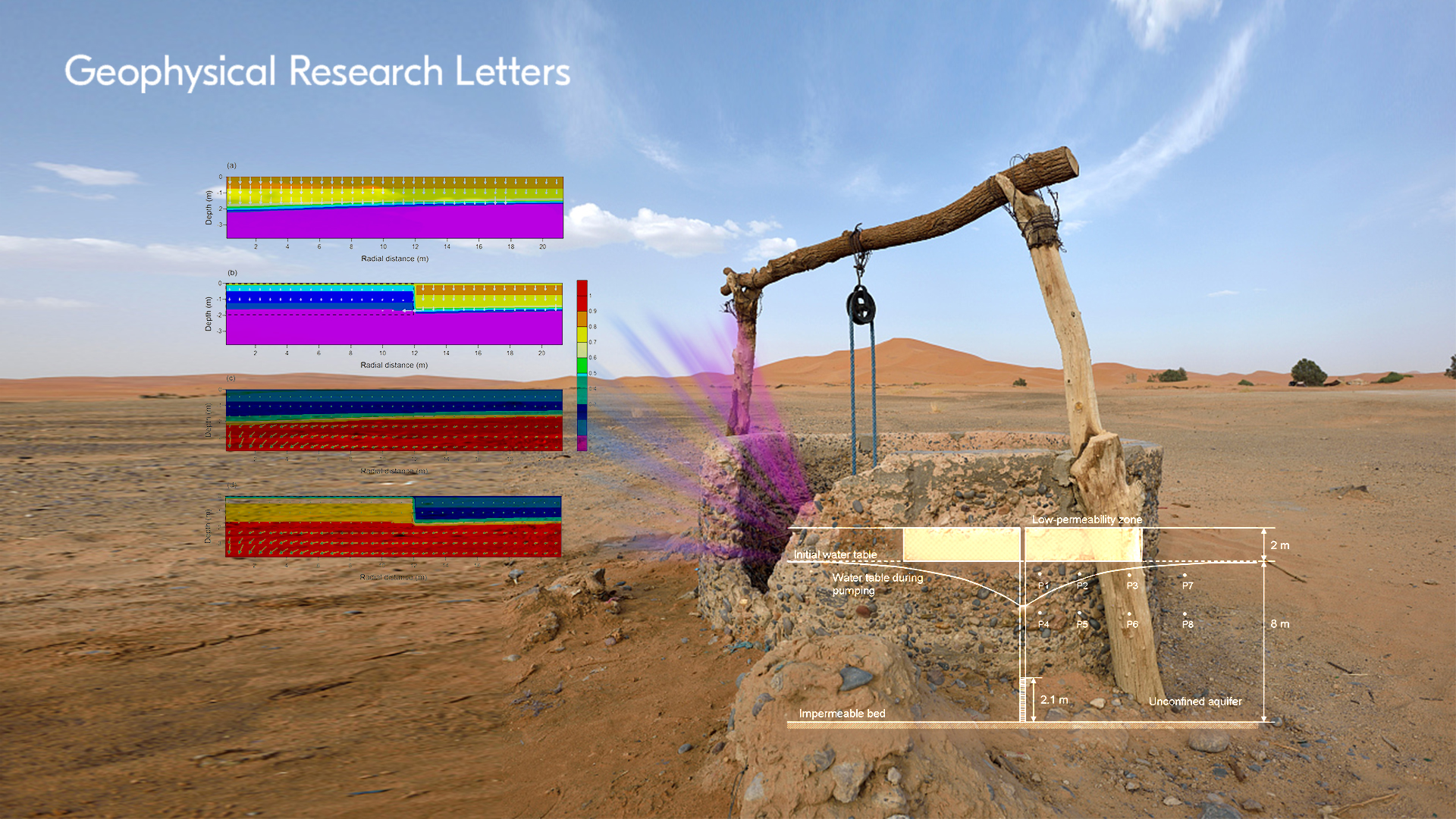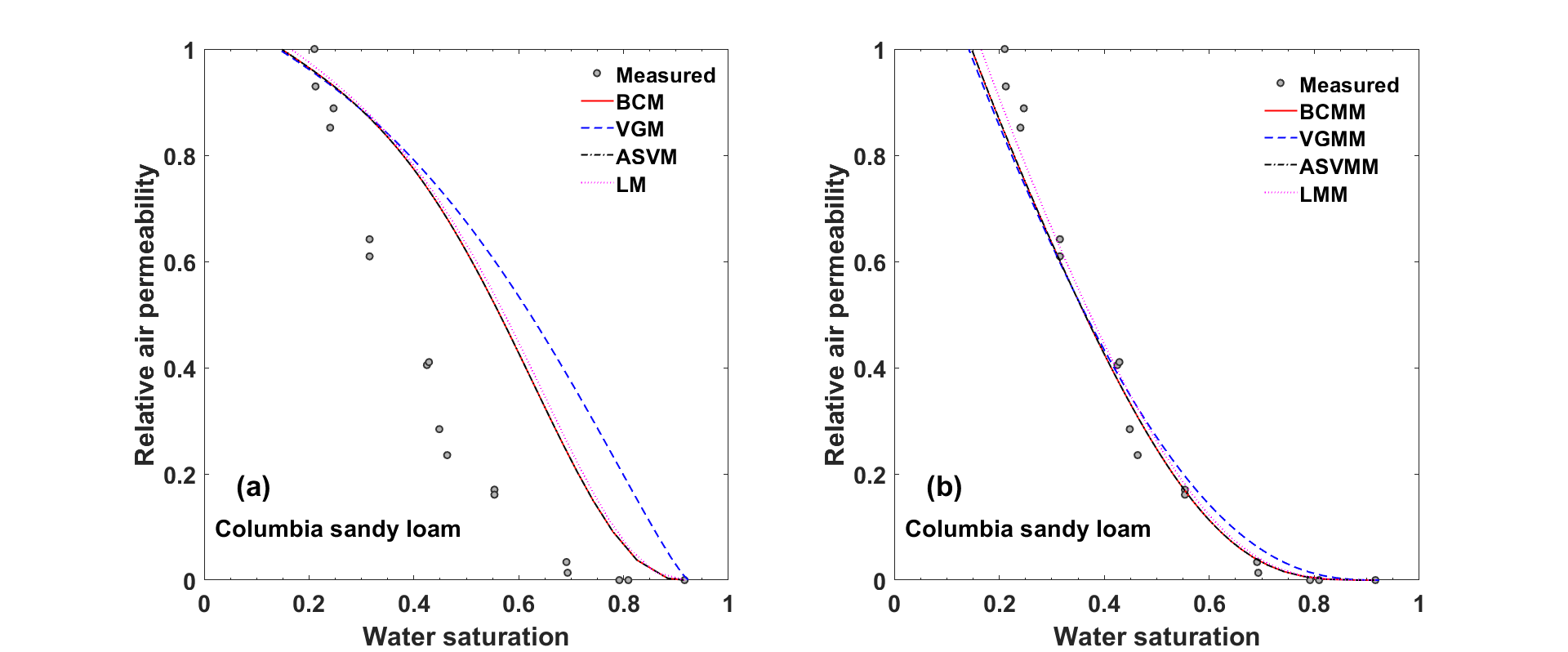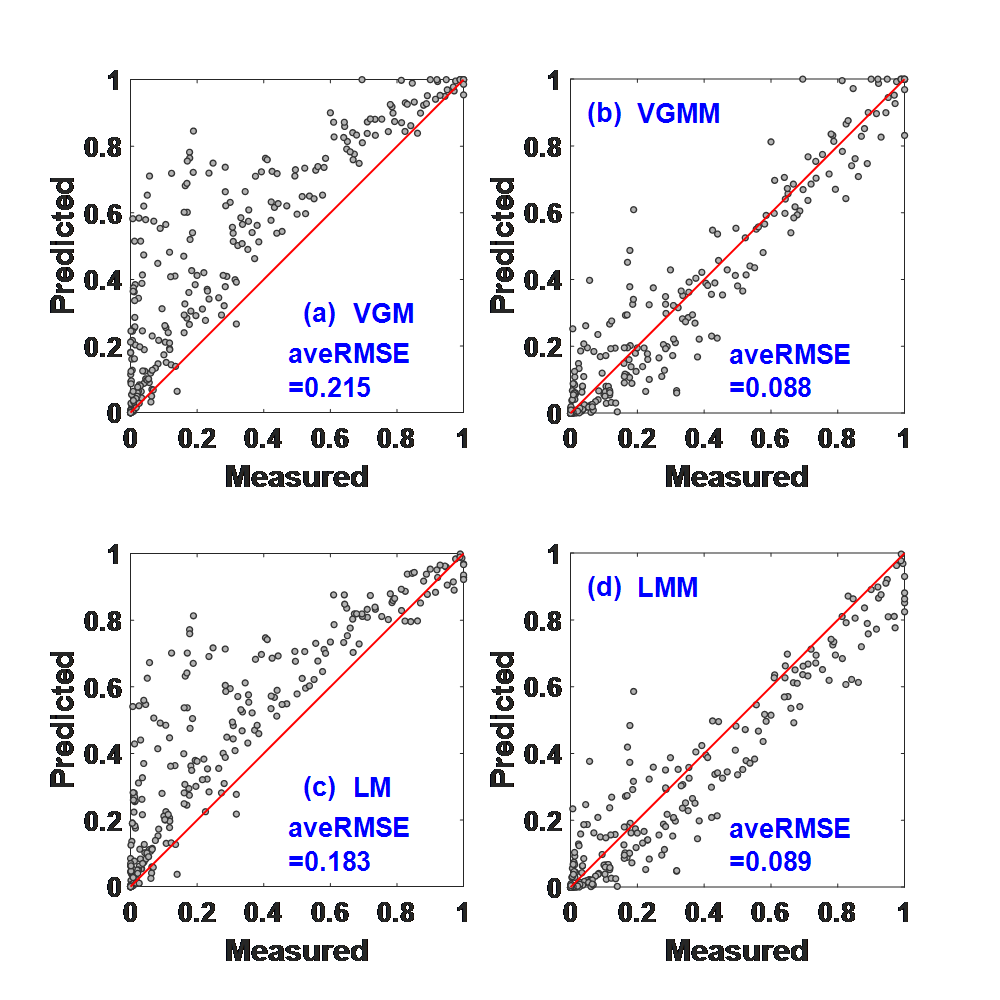SUSTech Xingxing Kuang's team publishes findings on relative air permeability for multiphase flow in porous media
Recently, Associate Professor Xingxing Kuang’s group from the School of Environmental Science and Engineering at the Southern University of Science and Technology (SUSTech) published a research article, entitled “Effects of water retention curves and permeability equations on the prediction of relative air permeability” in Geophysical Research Letters, a top journal in Geoscience category. Through model derivation and measured data validation, this research revealed the predominant role of the permeability equation in determining the relative air permeability in disturbed soils.

Relative air permeability, a key parameter in multiphase flow numerical simulators like TOUGH2 and STOMP, is indispensable when investigating several geophysical issues such as soil aeration and evapotranspiration, the simulation of reservoir CO2 injection, and the study of hydraulic fracturing fluid migration in the subsurface. Currently, a lot of effort has been dedicated to studying the relative water permeability, whereas research upon relative air permeability is comparatively less. In addition, measured data on relative air permeability that is used for model validation is not plentiful in literature.
Combining two traditional and two fractal water retention curves, respectively, with six permeability equations, they obtained twelve statistical and twelve fractal relative air permeability models (six statistical and nine fractal models were derived for the first time). These models were subsequently tested with thirty-one experimental datasets of disturbed soils to examine their predictive ability for relative air permeability. Results showed that compared to the selection of traditional or fractal water retention curves, the choice of permeability equations is more critical for the appropriate prediction of relative air permeability, indicating the dominant role of the pore tortuosity-connectivity in determining air permeability in disturbed soils. This research sheds light on the appropriate selection of relative air permeability, which will be used in the multiphase flow numerical simulators for the accurate modeling of airflow in porous/fractured media.

Figure 1. Comparison of measured data for Poudre river sand with predicted results. (a) BCB, VGB, ASVB, and LB models and (b) BCMB, VGMB, ASVMB, and LMB models.

Figure 2. Comparison of measured data for Columbia sandy loam with predicted results. (a) BCM, VGM, ASVM, and LM models and (b) BCMM, VGMM, ASVMM, and LMM models.

Figure 3. Scatter charts of measured versus predicted relative air permeability values by (a) VGM, (b) VGMM, (c) LM, and (d) LMM models.
Associate Professor Xingxing Kuang at SUSTech is the corresponding author for this paper. Westlake University’s research scientist Zhenlei Yang and Chair Professor Ling Li are the first and co-author, respectively. Assistant Professor Xin Tong at Inner Mongolia Agricultural University (IMAU) and Regent Professor Binayak P. Mohanty at Texas A&M University also participated in this study. This work was funded by the National Natural Science Foundation of China (NSFC).
Paper link: https://agupubs.onlinelibrary.wiley.com/doi/10.1029/2021GL092459
